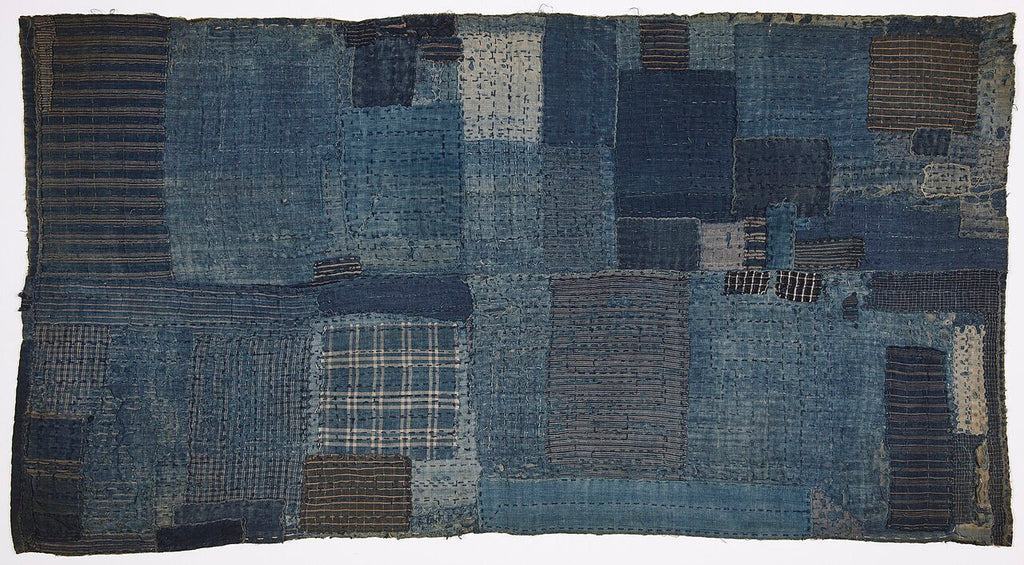This fall marks the 10-year anniversary of a creative friendship that has shaped both our work and our way of being in the world.
It was the autumn of 2015 when Susan Robinson and I found ourselves surrounded by pattern sketches, bolts of fabric, and endless pots of tea. We were naming, cutting, and stitching what would become the beloved Millie | Lottie line — simple, elegant totes designed for modern living. The visions came to me in my dreams in June and by November I was carrying my rolls to Thanksgiving dinner and our first totes sold early December. So many key moments to celebrate.

Now, a decade later, we’re returning to the table together — literally — to launch a new chapter:
The Handwork + Soup Salon
This series is about more than stitching. It’s about slowing down, working with our hands, sharing ideas, and nourishing one another — body, mind, and spirit — over a bowl of soup.
We’re beginning with a theme that will capture your hearts and imaginations:
Sashiko — The Art of Japanese Mending
Our November Handwork + Soup Salon will be the first in an evolving series devoted to exploring the basics of traditional mending techniques and the creative transformations they inspire. We’ll stay with Sashiko — learning, experimenting, and deepening — until we’ve exhausted its possibilities, and then move naturally into new themes that call to us.
The History and Spirit of Sashiko
Sashiko (刺し子), which translates to “little stabs,” originated in rural Japan during the Edo period (1603–1868). It began as a practical form of reinforcement — small running stitches used to strengthen and repair garments made from layers of indigo-dyed cotton.
In northern Japan, particularly in the snowy regions of Aomori Prefecture, Sashiko took on local variations. The most well-known include:
- Kogin-zashi (こぎん刺し) from Tsugaru — geometric, counted-thread patterns stitched across hemp fabric.
- Hishi-zashi (菱刺し) from Nambu — diamond-shaped motifs symbolizing strength and endurance.
- Boro (ぼろ) from the Tohoku region — literally “ragged” textiles, layered and patched repeatedly. Born of necessity, these textiles now embody beauty through resilience.
Originally, these stitches held together the work clothes of farmers and fishermen, allowing garments to last through harsh winters and hard labor. But over time, what began as necessity became art. The rhythm of the stitch — humble, repetitive, meditative — came to express the maker’s spirit.
The characteristic white thread on indigo creates a visual poetry of contrast — a luminous reminder that repair can reveal beauty rather than conceal damage. The patterns themselves — waves, mountains, seigaiha (blue ocean), asanoha (hemp leaf), and kikkō (tortoise shell) — echo nature, protection, and continuity.
Sashiko is the quiet poetry of thread and cloth — a dialogue between hands and time. Each stitch is small and deliberate, like a heartbeat, grounding the maker in presence.
Today, Sashiko has found new life around the world. Artists and makers use it not only to mend but to meditate, to slow down, to reconnect with the tactile world. It is a conversation between tradition and innovation, between the old and the newly imagined.

Child's sleeping mat, late 1800's with both functional + decorative stitches
Why We Begin Here
For us, beginning our Handwork + Soup Salon with Sashiko feels deeply right. It reflects everything we care about — beauty through simplicity, sustainability, attention, and the human need to make things last. We will begin with the basic stitches and grow if students are interested!
Just as Millie | Lottie was born from the impulse to create something timeless and functional, Sashiko celebrates what endures. It honors imperfection and resilience, both in fabric and in life.
Together with our participants, we’ll explore design, layout, and technique, but also the quieter side of making — the patience, the rhythm, the unexpected joy of bringing a favorite garment back to life. Each person’s project will unfold differently, and we’ll be there to support and guide, to share ideas, and to celebrate every stitch.
This is a community practice — a space where creativity, companionship, and soup come together.



Join the November Handwork + Soup Salon
Theme: Sashiko — The Art of Japanese Mending
When: Two Tuesday evenings, 6:00–8:30 PM
Cost: $150 for the two-part series
Optional Open Studio Night: $45 (continue your project or bring your own)
Includes: materials guidance, instruction, use of tools and machines, and soup
This is the first in an ongoing Handwork + Soup Salon series. We’ll continue exploring Sashiko until its stories and stitches have been fully shared, then move naturally into other inspired handwork traditions.
About the Makers
January Hammock is a designer and founder of Millie | Lottie, a brand known for its refined, functional bags and accessories. Her work bridges craft, entrepreneurship, and collaboration, from developing small-batch products to working alongside Susan Robinson at the beginning of Millie | Lottie and on innovations at Seismic and BeBop Sensors. Beyond design, she curates and hosts Soup Salons, intimate gatherings that combine food, conversation, and creative exchange, fostering community in a setting where ideas and connections are nourished.
Susan Robinson is a designer and maker who blends fashion, technology, and craft. As Lead Garment Product Developer at Seismic, she creates wearable robotics and powered clothing, shaping how the human body interacts with technology. She also consults with Atom Bodies, designing soft goods that help prosthetics feel like a natural extension of the body. A former Senior Adjunct Professor at California College of the Arts, Susan has spent over 20 years teaching and inspiring the next generation of designers. She has founded several brands, including Millie Lottie and Penelope Starr, and collaborated with companies like Fitbit and BeBop Sensors to bring innovative products to life


Leave a comment